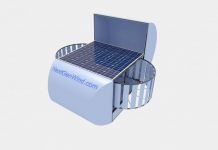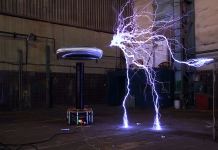Оptical rectenna is a device that converts solar energy into electric current. The device works as a rectifying antenna, only in the optical range of wavelengths. In 1972 he was presented the idea of using optical rectenna in solar energy. The device sizes in the range of hundreds of microns.
The device represents the smallest squares or spirals placed in a polyethylene which has been treated. The optical rectenna absorb the infrared rays that are emitted from all objects. The precursors of these antennas worked in another region of the electromagnetic spectrum, namely microwaves.
Efficiency optical rectenna to the absorption of infrared rays up to 92%.
This development allows to double the efficiency of solar cells. This is due to the fact that the antenna collect energy not only the sun, but from all objects which emit heat.
The optical rectenna have three parts: antenna, optical resonator, the main plane on which everything is assembled. Using electron-beam lithography fabricated matrix of the antenna.
There are two methods of making these devices:
– Lithography. The method consists in the following, on the main plane sprayed amorphous silicon, and then is installed onto a silicon wafer. A layer of silicon (deposited) reaches the fourth part of the waves of light. The antenna is a thin membrane of manganese. Its surface works as a filter of the desired frequency, it is frequency selective, made of gold. Next is applied a resistive layer via the template. After etching of the gold ball, the resistive layer is removed. The process takes a long time and is quite expensive.
– Roll technology. A more affordable method in the industrial production of optical rectenna. This technology is based on using standard. Manufacturer optical rectenna this technology is a seal (mechanical) on a cheap flexible substrate using the reference model. The benchmark is a circular silicon wafer with a diameter of 8 inches, and about 10 billion antennas. Using roll technology produced a lot of square cards 4 inch. Then they were combined in a flexible sheet optical rectenna.
One of the main disadvantages of optical rectenna is that while it is difficult to convert the received AC into DC. The reason for this is that the current generated has a frequency of several trillion per second, and size of existing rectifiers, which operate with such frequencies a thousand times higher than the required dimensions.
But in spite of this, a huge advantage of optical rectenna is that they are very effective. Matrix with antennas very easy to understand, so they are easy to configure on the absorption of waves of the desired length.
In the future with the problem of converting alternating current of high frequency, will allow optical rectennas completely replace the solar panels.























